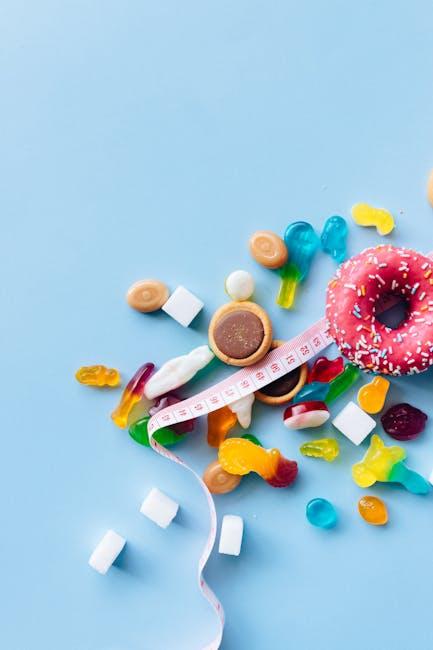In a world where culinary delights tempt us at every corner and the quest for a healthier lifestyle is more vibrant than ever, understanding the calorie content of our favorite dishes has become a vital skill. Welcome to the art and science of calorie calculation, where numbers dance with flavors and knowledge empowers choice. Imagine navigating a colorful market, each aisle offering an array of possibilities, and armed with the ability to discern the energy each morsel holds. With optimism and curiosity as our guides, we embark on a journey to demystify the process of calculating calories in food. This is not just about numbers; it’s about unlocking a deeper connection with what we eat, making informed decisions, and embracing a balanced approach to nourishment. Whether you’re a seasoned home chef or a curious food enthusiast, this guide will illuminate the path to culinary mindfulness, where every bite is a step towards a healthier, happier you.
Unveiling the Mysteries of Calorie Counting
Understanding how to calculate the calories in food can transform your approach to eating and health. It’s like unlocking a secret code that helps you align your diet with your lifestyle goals. To begin, consider the key components that make up the caloric content of any food item: carbohydrates, proteins, and fats. Each of these macronutrients contributes a specific number of calories per gram. For example, carbohydrates and proteins both provide 4 calories per gram, while fats are more calorie-dense, offering 9 calories per gram. By knowing the macronutrient composition of your food, you can calculate the total caloric value with ease.
For those eager to dive deeper, here are some steps to streamline your calorie counting process:
- Read Nutrition Labels: These are treasure maps to the nutritional landscape of packaged foods, providing essential information about serving sizes and nutrient content.
- Use a Food Scale: Weighing your food ensures accuracy, especially for items without a nutrition label.
- Leverage Apps: Modern technology offers a plethora of apps that can simplify the tracking of daily caloric intake, making the process both efficient and engaging.
- Practice Portion Control: Familiarize yourself with standard serving sizes to avoid unintentional overconsumption.
Embracing these methods not only empowers you with knowledge but also brings a sense of control and optimism as you work towards your dietary aspirations.

Mastering the Art of Nutritional Labels
Understanding the energy content in your meals is a gateway to a healthier lifestyle. When you encounter a nutritional label, it’s essential to focus on the serving size first. This is your baseline. Most labels present the calorie content per serving, so always compare this to the portion you plan to eat. If your portion size is double the serving size on the label, you’ll need to double the calories as well.
To make this process easier, follow these steps:
- Check the serving size: This is the starting point for calculating everything else.
- Multiply as needed: If you’re eating more than one serving, multiply the calories accordingly.
- Consider additional ingredients: If you’re adding extras like sauces or sides, don’t forget to account for their calories too.
Remember, mastering these calculations empowers you to make informed choices, paving the way to a more balanced and vibrant diet!

Harnessing Technology for Precise Calorie Tracking
In our quest for healthier living, leveraging modern technology can transform how we understand and manage our dietary intake. With the advent of calorie-tracking apps and smart kitchen gadgets, the once daunting task of calculating calories has become more accessible and precise. Imagine snapping a photo of your meal and instantly receiving detailed nutritional information, or using a smart scale that syncs with your phone to provide an accurate breakdown of your food’s caloric content. These innovations not only save time but also empower individuals to make informed dietary choices with ease.
- Calorie-tracking apps: These tools often come with vast databases of foods, allowing users to search for items or scan barcodes to find caloric information instantly.
- Smart kitchen scales: By weighing ingredients and syncing with apps, these devices offer precise measurements, ensuring you track exactly what you’re consuming.
- Wearable fitness trackers: Beyond monitoring physical activity, many of these gadgets also estimate calories burned, helping balance intake with expenditure.
By embracing these technological advancements, we can shift from guesswork to precision, ultimately paving the way for healthier eating habits and better overall wellness.
Crafting Your Personalized Calorie Strategy
Embarking on the journey to tailor your calorie intake can be both exciting and empowering. This process is akin to crafting a bespoke suit, where each measurement is tailored to fit your unique body and lifestyle. Start by identifying your daily caloric needs using tools like the Harris-Benedict Equation or online calculators. These will help you understand the baseline number of calories required to maintain your current weight. Once you have your baseline, consider your personal goals—whether it’s to lose, maintain, or gain weight—and adjust your intake accordingly.
Next, delve into the art of calorie calculation for individual foods. Embrace a hands-on approach with these simple steps:
- Research: Use nutrition labels and trusted online databases to find calorie information.
- Portion Control: Weigh or measure your food to ensure accurate portion sizes.
- Track Consistently: Utilize apps or journals to log your daily intake, creating a clear picture of your eating habits.
With a personalized strategy, you’ll not only meet your nutritional goals but also enjoy a sense of achievement as you see your efforts manifest in your daily life. Remember, the key is consistency and making adjustments as your needs evolve.



